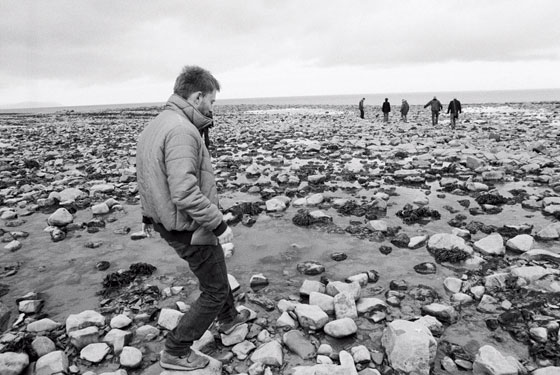
Twenty seconds into the groovy beats of “15 Step,” the first song on In Rainbows, and, if you’re a lapsed Radiohead fan like me at least, it’s hard not to feel a powerful sense of gratitude—and then something close to elation. By the middle of the tune, when a sample of children yelling crops up unexpectedly, you want to shout along with them. The diffident bastards of Radiohead have spared us another brooding lesson in postmodern musicology and given us songs that have shape and definition and punctuation and melodies that, while not catchy in a pop sense, make you want to hear them again and again.
It should now be obvious to Radiohead obsessives, the ones who adore every little ambient blurp they’ve ever made, that I am one of those philistines who believed, until now anyway, that The Bends, their second album, from 1995, marked their creative peak. Back then, they were not embarrassed to be a rock band, and they were great at it, blending R.E.M.’s eccentric spirit with the grandeur of U2 and executing it with technical chops superior to both bands. Thom Yorke’s fragile voice held its own against dense, unruly guitars; it actually sounded better that way. And about those guitars—Jonny Greenwood is the peerless six-string virtuoso of his generation, equally masterful at monstrous Zeppelin-y riffs and delicate acoustic fills. OK Computer was another rock masterpiece, even as it showed signs of Radiohead’s thinking too hard and discounting their excellent instincts.
Then came Kid A in 2000. Critics went bananas, and it’s undeniable that it was a brave and, at points, compelling experiment. But it sounds now more like a product of its moment than a resonant, timeless work—how often do you go back to it?—and Radiohead’s subsequent albums, Amnesiac and Hail to the Thief, were a good deal less memorable. Such gifted rock practitioners wallowing in loopy keyboards, droning effects, and formless melodies was like Michael Jordan going off and playing baseball. Admirable that he could do as well at it as he did, sure, but ultimately a misuse of talent.
Throughout their years in the electronic wilderness, Radiohead did keep putting on sensational live shows, injecting the vitality of rock into even their most vaporous material. I remember seeing them on the “Hail to the Thief” tour in the summer of 2003 at the Hollywood Bowl and wanting to run home to listen to the album, thinking that I must have misjudged it. I hadn’t.
With In Rainbows, Radiohead returns to sounding like a band, while still exploring a broad range of styles and sounds. The song that comes right after “15 Step” is strikingly different, like something from The Bends—or even U2—that combination of big guitars and big reverb, only with sharper edges. The best song on the album is “Reckoner,” which Yorke sings in a sweet, soulful falsetto. It’s as good as he’s ever sounded. The arrangement is powered by a lively tambourine beat and a minor-key guitar sequence that give way to a gentle orchestral wash in the middle, kick back in, and then bleed at the end into major-key strings. The effect is epic and grand, but without bombast. The closing track, “Videotape,” with its rattling, out-of-sync snare beat, manages the same incredible effect.
Jack White has said that artists need to set rules and limits for themselves; otherwise, the world of creative possibilities is too vast. (This justifies his devotion to working with Meg White.) Radiohead obviously thought differently, and Kid A launched them on a detour that they’ve taken seven years to find their way back from. But the astonishing In Rainbows has the power to turn Radiohead’s admirers into the rabid fans they used to be.
In Rainbows
Radiohead. inrainbows.com.